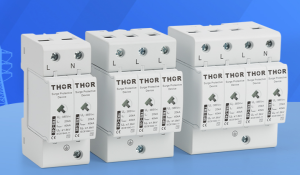In the digital era, where reliance on electronic devices is more significant than ever, protecting these investments becomes paramount. Many individuals, however, often overlook a critical component that safeguards these devices - the surge protector. By choosing not to utilize a surge protector, one inadvertently opens the door to a multitude of risks, ranging from damage to electronic devices to potential financial losses.
Electrical surges can occur without warning, usually due to external factors like lightning or irregularities from the power company. These unexpected spikes in electrical voltage can be devastating, primarily when they reach appliances and electronic devices connected directly to a power source. A surge protector acts as a shield, absorbing excess energy and preventing it from reaching and damaging the connected devices.
Without the implementation of a surge protector, electronics are directly exposed to these overvoltages, which their internal components are not designed to handle. The immediate threat is the potential burning of these parts, rendering the devices unusable. This damage is not just a simple malfunction that a warranty might cover; it often leads to the necessity of replacing the device altogether, imposing an unexpected financial burden on the user.

Additionally, sensitive data loss is another often unconsidered consequence. For instance, computers without surge protectors can suffer hard drive damage during a power surge, leading to irretrievable data loss. This loss is particularly critical for businesses and individuals who store sensitive information or irreplaceable memories like family photos.
Moreover, the absence of a surge protector poses a fire hazard. Electrical surges can spark fires, especially in areas with outdated or faulty wiring. These incidences not only endanger investments in electronics but also pose a significant risk to personal safety and property.
Not using a surge protector also implies a more frequent need for maintenance and repairs. The consistent mini-surges or fluctuations, which might not always be noticeable, can degrade the internal workings of electronic devices over time. This continuous wear and tear often result in a shorter lifespan for the devices that most people rely on daily.
Understanding these risks underscores the importance of incorporating a surge protector into every electronic setup. It is not merely an accessory but a necessity for preserving the integrity and longevity of electronic devices, safeguarding personal and financial information, and protecting users from potential fire hazards. By recognizing the value of this indispensable tool, individuals can ensure a layer of security for their electronic devices, financial investment, and, most importantly, their safety.